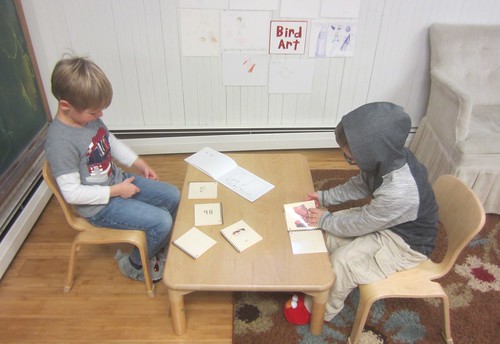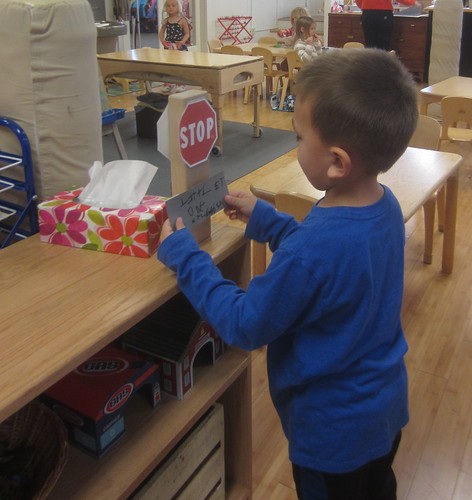We all enjoyed the soggy snow between rainy days. We hauled truckloads, shovelfuls, and buckets of snow, ice, and water. It was great wet fun!
Monday students continued their study of birds by being bird artists. We read the story The Painter Who Loved Chickens, then watched a clip of an artist giving a step by step tutorial of how to draw a bird. The children used pencils to sketch the outlines of their birds, being sure to include a head, body, feet, wings, and beak. They then added colorful feathers. They created some really fantastic birds!
To continue with our bird theme, the children were introduced to a turkey making activity. They used their fine motor skills to paint a clothespin brown and color a coffee filter with markers then spray it with water to make the colors run and bleed together. Once dry, they folded the coffee filter tail, clipped it in the body, and added eyes, a waddle, and a beak.
We continued our discussion of the classroom rules. Last week we focused on the expectation BE SAFE. This week we delved into BE RESPECTFUL. We played the same type of game where the children chose a slip of paper that completed the sentence: “Show us how to be respectful when you . . .” The child would then demonstrate or describe what they would do in a certain situation, such as . . . need a teacher’s attention, spilled someone’s snack, need to get by someone in your way, or bumped into someone.
The block area was busy with the construction of some complex structures with varied purposes. The children added signs to label their buildings, bridges, and factories. They lined up people, stacked up rocks, and ordered animals. There was great collaboration, planning, negotiation, and compromising.
As our winter performance is quickly approaching and we want to be well prepared, we have been practicing and learning our songs and poems. Susan has been leading the children and helping them choose roles for the performance, and they have been working hard to learn the words, motions, actions, and signs. The children were given the opportunity to choose a line from one of two poems we will be sharing, and then practice in small groups with Susan. They also continued to practice the bells, which may accompany our rendition of Twinkle, Twinkle, Little Star.
Rose quizzed us on our signs. She signed each one we have learned so far, and the children called out what they were. She also taught us the signs for all the seasons and signed the song Twinkle, Twinkle, Little Star so we can use some of this for our performance. She then introduced some more feeling/emotion signs. We learned shy, sick, scared, grumpy, and hungry.
The children have been busy writing books this week. Some of the Friday students asked Lyn to read or shared their books themselves with the group.
Friday students took a break from studying the animal groups and did some balancing work. We read Balancing Act by Ellen Stoll Walsh and Just a Little Bit by Ann Tompert, about animals trying to balance see-saws. We then took out some scales and tried to do our own balancing. The children identified that the lower side was heavier, so items should be added to the higher side. When questioned if rather than adding to the lighter side there was something else they could do, they determined that they could remove items from the heavier. When they slowed down and thought about what they were doing, they were able to balance their scales by adding or removing one item at a time.






















































